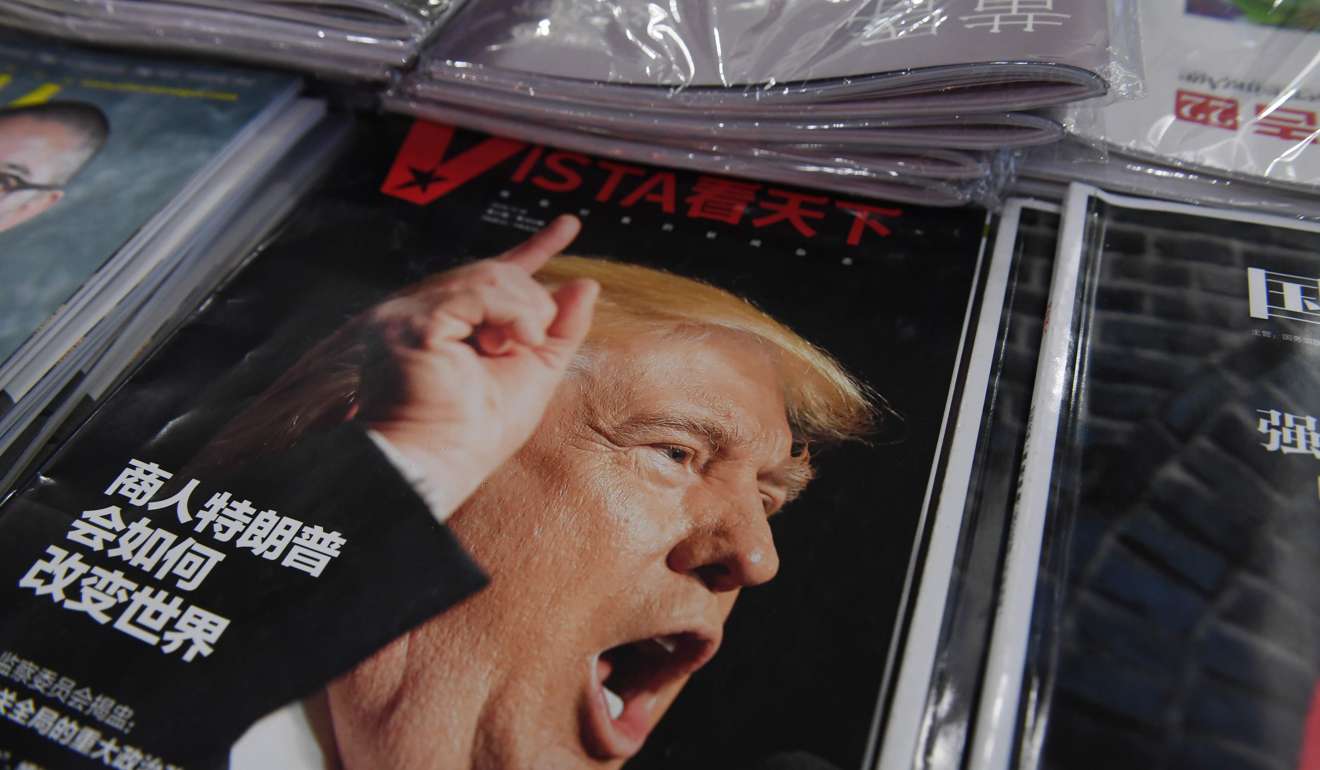Trump’s ‘currency manipulation criteria’ claim over China dismissed by his own Treasury
Treasury report found ‘no economy satisfied its key three criteria’: a significant bilateral trade surplus with the US, a material current account surplus, and is engaged in persistent one-sided intervention in the foreign exchange market

US President Donald Trump believes the Chinese authorities are “grand champions” in currency manipulation, but the assertion doesn’t stand scrutiny.
If judged by the US Treasury’s current criteria on the subject, US Treasury Secretary Steven Mnuchin and his officials might be hard-pushed to justify branding China a currency manipulator.
Mnuchin himself said last week the US Treasury will follow procedure. “We have a process within the Treasury where we go through and look at currency manipulation across the board,” he said.
“We’ll go through that process. We’ll do that as we have in the past. We’re not making any judgements until we continue that process.”
The process alluded to by Mnuchin is described in the US Treasury’s semi-annual Report to Congress on the “Foreign Exchange Policies of Major Trading Partners of the United States” and is derived, as described in last October’s report, from “the intensified evaluation provisions of the Trade Facilitation and Trade Enforcement Act of 2015.”
The process prescribed by the 2015 Act requires the US Treasury to undertake an enhanced analysis of exchange and externally‐oriented policies for each major trading partner that has: (1) a significant bilateral trade surplus with the United States, (2) a material current account surplus, and (3) engaged in persistent one‐sided intervention in the foreign exchange market.
In October 2016, the US Treasury Report found “that no economy satisfied all three criteria.”
China only met one of the three designated criteria, namely a large bilateral trade surplus with the United States, while Germany, Japan, South Korea, Switzerland and Taiwan actually met two of the three.

As regards the bilateral trade surplus issue, unless there is a full-scale trade war, China will surely continue to meet this criterion for the foreseeable future given that the US Treasury holds that a “significance threshold of about US$20 billion” helps to define what can be categorised as a significant trade surplus.
According to the US Census Bureau, China ran a trade surplus with the United States of US$347 billion in 2016 and although that was down from US$367 billion in 2015, it was by far the largest bilateral trade surplus of any country with Uncle Sam.
To put it into context, the second, third and fourth nations, Japan, Germany and Mexico ran trade surpluses with the United States of US$68.9, US$64.9 and US$63.2 billion respectively in 2016.

Ten countries in total had trade surpluses with the United States in excess of the US Treasury’s US$20 billion significance threshold.
As for Hong Kong, it provided the United States with its biggest trade surplus with a single partner in 2016, at US$27.5 billion.
On the second issue of the “material current account surplus,” the US Treasury deems that “a surplus of 3 per cent of [Gross Domestic Product] GDP is considered material.”
China does not breach that criterion as was acknowledged in October’s US Treasury Report and it still won’t when the next report, scheduled for April, is issued.
China neither currently meets this criterion nor is anywhere close. Beijing actually made net sales of foreign currency in 2016, China’s foreign exchange reserves fell by US$320 billion over the year after a drop of US$513 billion in 2015
On Feb 8, China’s State Administration of Foreign Exchange said China’s current account in 2016 was equivalent to 1.9 per cent of GDP, having fallen from 2.7 per cent in 2015. In contrast Germany’s current account surplus for 2016 was 8.7 per cent of GDP.
And then there is the US Treasury’s final criterion of being “engaged in persistent one-sided intervention in the foreign exchange market.”
In October’s Report the US Treasury wrote that “China’s intervention in foreign exchange markets has sought to prevent a rapid [renminbi] RMB depreciation that would have negative consequences for the Chinese and global economies.”
Aside from the fact that the US Treasury saw the merits of those actions it is also the case that “persistent one-sided intervention,” as defined by the US authorities, only extends to buying not selling foreign currency.
In defining what constitutes persistent one‐sided intervention, the US Treasury “has set a threshold for this criterion of net purchases of foreign currency, conducted repeatedly, totalling at least 2 per cent of an economy’s GDP over a period of 12 months ending either June or December.”
“Notably, this quantitative threshold is sufficient to meet the criterion,” the US Treasury wrote. China neither currently meets this criterion nor is anywhere close. Beijing actually made net sales of foreign currency in 2016, China’s foreign exchange reserves fell by US$320 billion over the year after a drop of US$513 billion in 2015.
While Washington could choose to move the goalposts in April’s report, based on the US Treasury’s current criteria, the United States would find it hard to brand China as a currency manipulator even if President Trump thinks that’s the case.